Do you know how our food is Digested?
Do you know how our food is Digested?
Hello steemians...,
Have you eaten today? What do you eat? The food we eat every day is very diverse.
Although the form of food that you consume is different, but basically the food we consume contains one or more different food substances. Substances contained in foods can be carbohydrates, fats, proteins, vitamins, and minerals. Carbohydrates, fats, and proteins are often also classified as food sources of energy. As for vitamins and minerals as a group of non-energy foods.
Did you know that all the food we eat will be digested by the digestive organs?
The digestive system in humans consists of several organs. The organ digests the food through mechanical and chemical processes.
Mouth
The mouth is the first gastrointestinal organ in charge of digesting food. The main function of the mouth is to destroy food so that its size is small enough to be swallowed into the stomach.
The mouth can smooth the food because in the mouth there are teeth and tongue. Teeth function to destroy food. The function of the tongue is to turn the food so that all food is destroyed evenly. In addition, the tongue serves to help swallow food. Teeth and tongue include mechanical digestion tools.
In addition to digesting food mechanically, in the mouth also occurs digestion chemically. Digestion is chemically possible because the salivary glands produce saliva containing water, mucus, and ptialin enzymes. Water and mucus are useful to lubricate the oral cavity and help the process of swallowing. The ptialine enzymes convert starch to simpler carbohydrates, ie maltose.
Try chewing white rice for a long time. How is the taste of rice? After chewing on the mouth for a while, the rice tasted rather sweet, did not it? This can happen because some of the starch on rice decomposes into a maltose that tastes slightly sweet. Therefore, the rice tastes slightly sweet after chewing for a while.
In the mouth other than there are teeth also have tongue. Tongue is a taste of taste that we have. Because tongue you can feel the pleasure of food. Although the real taste is only felt as long as the food is in the mouth, but the taste will increase appetite. Without the taste you will tend to not appetite.
This you can feel for yourself. If there is good food, you will eat with gusto and plenty. Conversely, if the food feels bad, you will tend to be lazy to eat or just eat a little.
Esophagus
After chewing on the mouth, food is swallowed to enter the stomach through a channel called the esophagus. The esophagus or esophagus serves to deliver food from the mouth to the stomach. Inside your neck there are actually two channels, the esophagus (lying behind) and the throat or trachea (located in front).
The esophagus is the epithelial channel that connects between the mouth and the stomach. The throat is a respiratory tract connecting between the oral cavity and the lungs.
Therefore, inside the mouth there is a junction of two channels guarded by a valve called epiglottis. At the time of breathing, the valve opens so that air can enter the throat.
When swallowing food, the valve will close the throat so the food does not go into the throat. So, the valve is working to keep the work between the throat and throat so that the digestive and respiratory processes can run smoothly.
As it passes through the esophagus, food is pushed into the stomach by peristalsis of the muscles of the esophagus. This is because the throat wall is composed of smooth, circular muscles that extend and contract in turn. As a result, food gradually pushed into the stomach. In the esophagus the food just passes and does not experience digestion.
Stomach
Stomach is a pocket-shaped digestive tool. The walls of the stomach are composed of elongated, circular, and oblique muscles. This allows the food that enters the stomach to be turned back and kneaded again so that it becomes smoother. Food that is chewed on the mouth is not smooth enough yet. Therefore, it needs to be refined again in the stomach. In order for your stomach to not work too hard, you should chew your food until smooth properly before swallowing.
In addition to digesting food mechanically, the stomach also digests the food chemically. The stomach produces a liquid containing water, mucus, gastric acid (HCl), as well as the enzyme renin and pepsinogen. Because of its acidic nature, stomach fluids can kill germs that come with food.
Meanwhile, the renin enzyme will agglomerate the milk protein present in the milk so it can be digested further. Pepsinogen will be activated by HCl into pepsin which serves to break the protein into peptone.
Refined Bowel
Once ingested in the stomach the food will go into the small intestine. The small intestine consists of three parts, namely the duodenum, the empty intestine (jejunum), and the intestinal absorption (ileum).
The intestines of the twelve fingers and the empty intestine play an important role in the digestion of the food chemically. In the intestines of these twelve fingers the gallbladder and pancreas secrete digestive fluid. Bile produced by the gallbladder will play a role in the digestion of fat by emulsifying fat so it can be digested further.
Pancreatic fluid contains important digestive enzymes, namely trypsinogen, amylase, and lipase. Tripsinogen is activated by enterokinase into trypsin which digest proteins into amino acids. Amylase will digest starch into glucose, while lipase digests fat into fatty acids and glycerol. In addition to these enzymes the small intestine also produces other enzymes which help with digestion of food, such as peptidase and maltase.
Digestion of food ends in ileum. Here the digested food will be absorbed by the ileal wall. Glucose, amino acids, minerals, and vitamins will be absorbed through the blood vessels of the ileal wall. The fatty acids and glycerol will be absorbed through the lymph vessels. Lymph vessels will eventually lead to blood vessels so that the juice of food can be circulated throughout the body.
Colon
Substances that are not absorbed by the small intestine will then enter the colon or colon. In this large intestine occurs the absorption of water and the decay of food scraps by bacterial decay.
Decay is done by bacteria that live in the intestine. Finally the remaining food will be removed in the form of feces (feces) through the anus. In the large intestine there is a section called the appendix. In humans, the function of the appendix is unclear. In plant-eating animals, such as rabbits and guinea pigs, the appendix helps digest cellulose.
Sources for Text and Images:
- https://www.thinglink.com/scene/599440394983309312
- https://biology911.wordpress.com/2011/03/26/organ-pencernaan/
- http://www.mtpelajaran.com/2018/01/rangkuman-sistem-pencernaan-makanan.html
- https://oakcrestapbio.wordpress.com/digestive-system/stomach/
- https://www.istana-herbal.com/blogs/penyakit-lambung/cara-efektif-menjaga-kesehatan-pencernaan
- http://www.allposters.co.uk/-sp/This-Illustration-Depicts-the-Anatomy-of-the-Large-Intestine-Colon-Posters_i9013176_.htm
- Book, Belajar IPA Membuka Cakrawala Alam Sekitar (Book, Sains: Opening the natural horizon around). Departemen Pendidikan Nasional, year: 2008

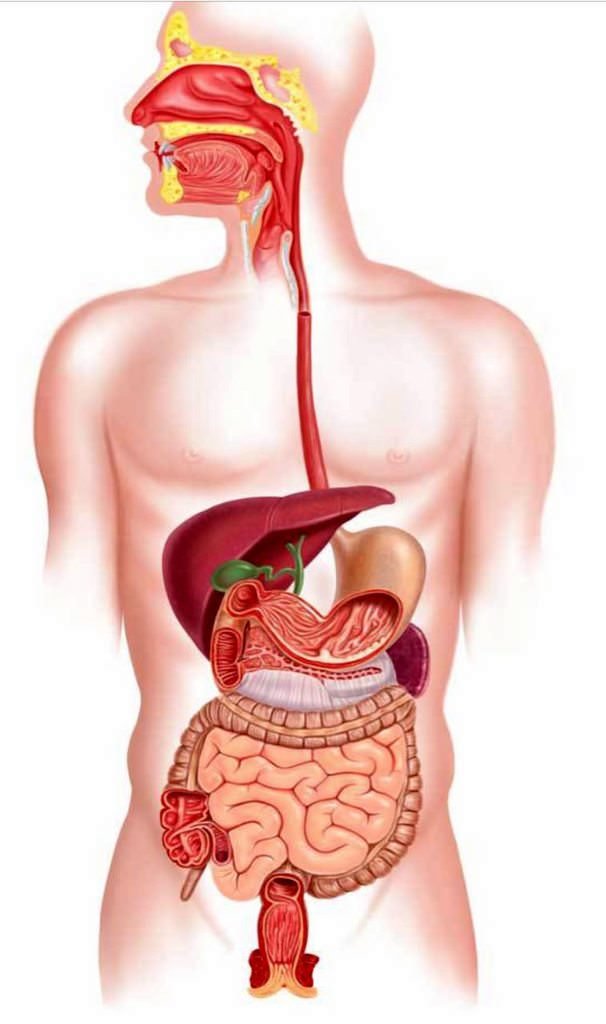
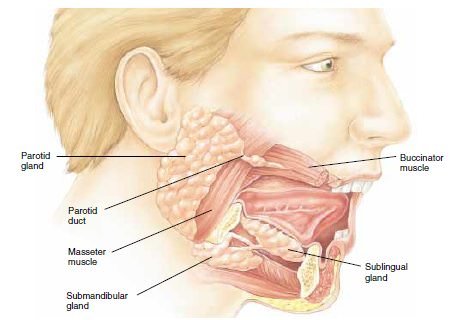
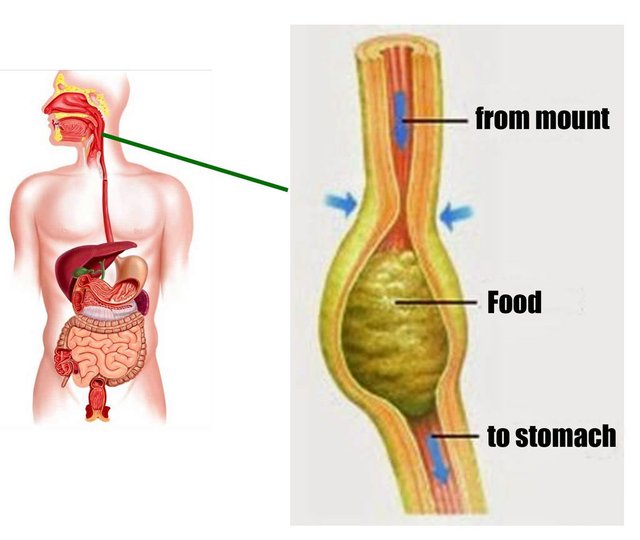
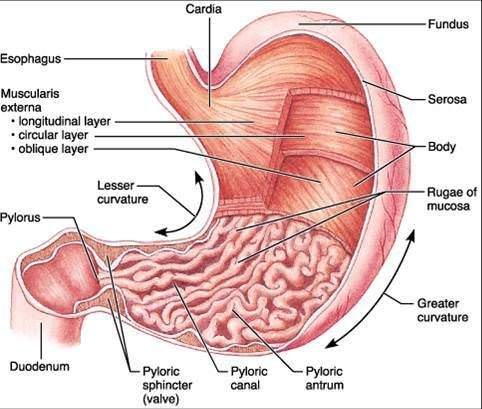
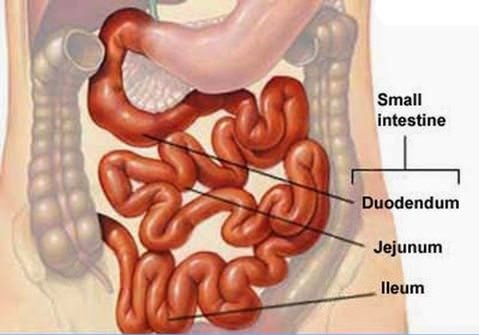
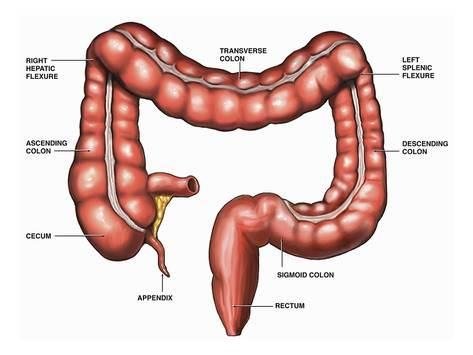
Congratulations! This post has been upvoted from the communal account, @minnowsupport, by alif01 from the Minnow Support Project. It's a witness project run by aggroed, ausbitbank, teamsteem, theprophet0, someguy123, neoxian, followbtcnews, and netuoso. The goal is to help Steemit grow by supporting Minnows. Please find us at the Peace, Abundance, and Liberty Network (PALnet) Discord Channel. It's a completely public and open space to all members of the Steemit community who voluntarily choose to be there.
If you would like to delegate to the Minnow Support Project you can do so by clicking on the following links: 50SP, 100SP, 250SP, 500SP, 1000SP, 5000SP.
Be sure to leave at least 50SP undelegated on your account.
Thank you alif01 for making a transfer to me for an upvote of 1.34% on this post!
Half of your bid goes to @budgets which funds growth projects for Steem like our top 25 posts on Steem!
The other half helps holders of Steem power earn about 60% APR on a delegation to me!
For help, will you please visit https://jerrybanfield.com/contact/ because I check my discord server daily?
To learn more about Steem, will you please use http://steem.guide/ because this URL forwards to my most recently updated complete Steem tutorial?
Thanks you @jerrybanfield .. i will soon join in https://jerrybanfield.com/contact/ ... You are my witness ... and you are a good witness
Very descriptive! Great article you have there :)